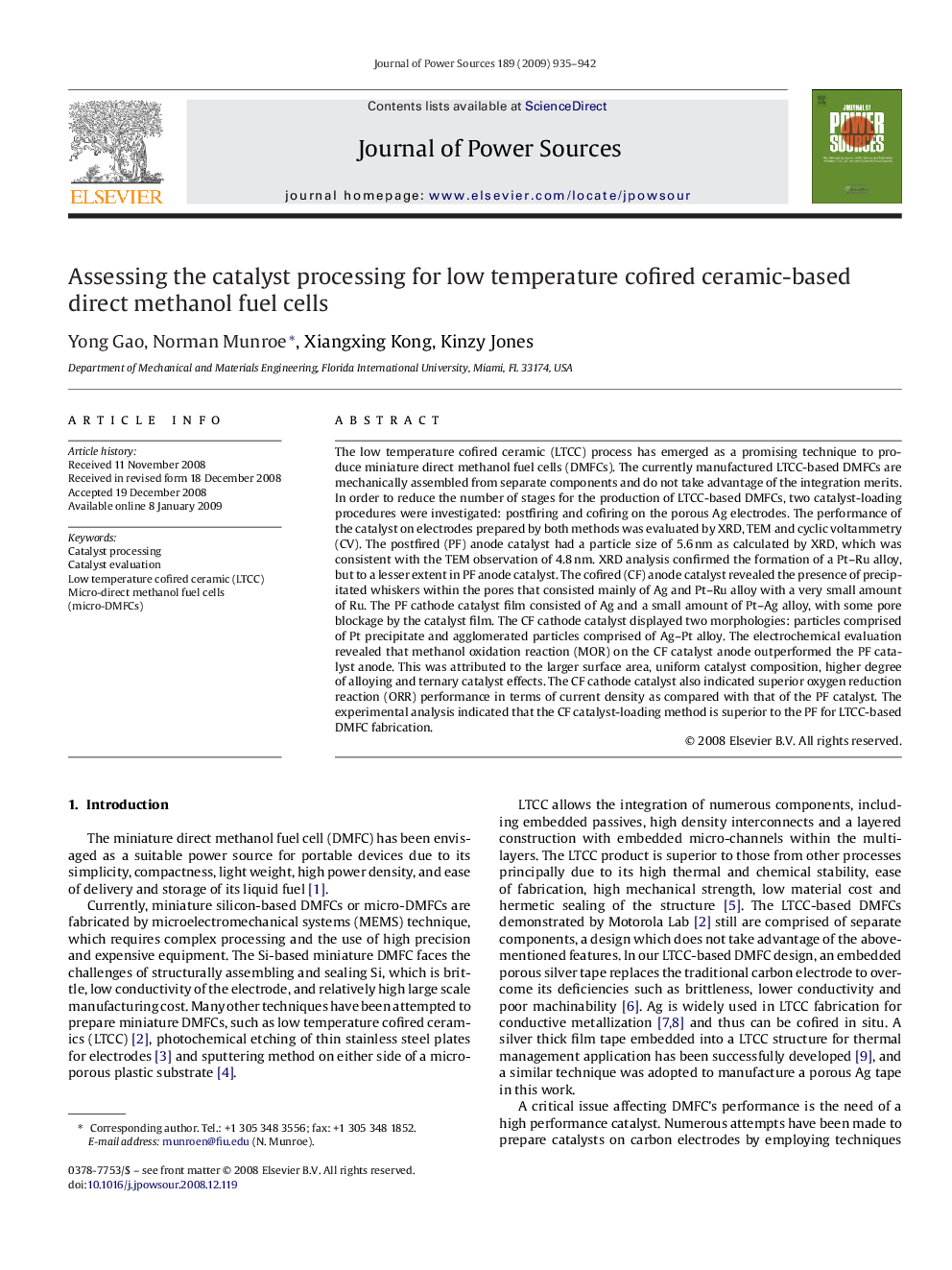| کد مقاله | کد نشریه | سال انتشار | مقاله انگلیسی | نسخه تمام متن |
|---|---|---|---|---|
| 1289964 | 973316 | 2009 | 8 صفحه PDF | دانلود رایگان |
عنوان انگلیسی مقاله ISI
Assessing the catalyst processing for low temperature cofired ceramic-based direct methanol fuel cells
دانلود مقاله + سفارش ترجمه
دانلود مقاله ISI انگلیسی
رایگان برای ایرانیان
کلمات کلیدی
موضوعات مرتبط
مهندسی و علوم پایه
شیمی
الکتروشیمی
پیش نمایش صفحه اول مقاله

چکیده انگلیسی
The low temperature cofired ceramic (LTCC) process has emerged as a promising technique to produce miniature direct methanol fuel cells (DMFCs). The currently manufactured LTCC-based DMFCs are mechanically assembled from separate components and do not take advantage of the integration merits. In order to reduce the number of stages for the production of LTCC-based DMFCs, two catalyst-loading procedures were investigated: postfiring and cofiring on the porous Ag electrodes. The performance of the catalyst on electrodes prepared by both methods was evaluated by XRD, TEM and cyclic voltammetry (CV). The postfired (PF) anode catalyst had a particle size of 5.6Â nm as calculated by XRD, which was consistent with the TEM observation of 4.8Â nm. XRD analysis confirmed the formation of a Pt-Ru alloy, but to a lesser extent in PF anode catalyst. The cofired (CF) anode catalyst revealed the presence of precipitated whiskers within the pores that consisted mainly of Ag and Pt-Ru alloy with a very small amount of Ru. The PF cathode catalyst film consisted of Ag and a small amount of Pt-Ag alloy, with some pore blockage by the catalyst film. The CF cathode catalyst displayed two morphologies: particles comprised of Pt precipitate and agglomerated particles comprised of Ag-Pt alloy. The electrochemical evaluation revealed that methanol oxidation reaction (MOR) on the CF catalyst anode outperformed the PF catalyst anode. This was attributed to the larger surface area, uniform catalyst composition, higher degree of alloying and ternary catalyst effects. The CF cathode catalyst also indicated superior oxygen reduction reaction (ORR) performance in terms of current density as compared with that of the PF catalyst. The experimental analysis indicated that the CF catalyst-loading method is superior to the PF for LTCC-based DMFC fabrication.
ناشر
Database: Elsevier - ScienceDirect (ساینس دایرکت)
Journal: Journal of Power Sources - Volume 189, Issue 2, 15 April 2009, Pages 935-942
Journal: Journal of Power Sources - Volume 189, Issue 2, 15 April 2009, Pages 935-942
نویسندگان
Yong Gao, Norman Munroe, Xiangxing Kong, Kinzy Jones,